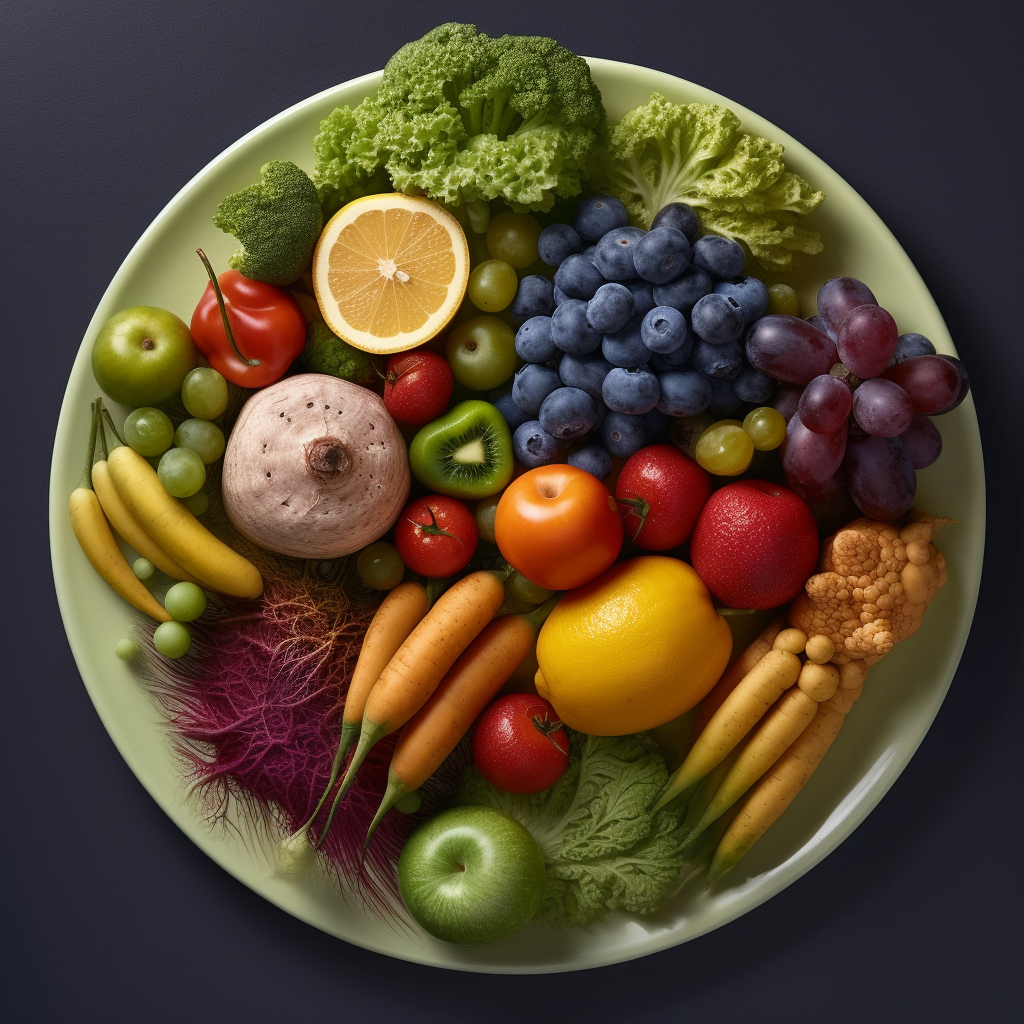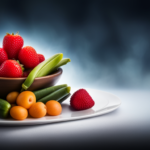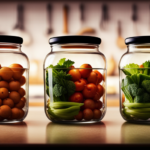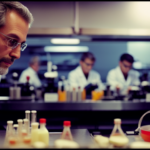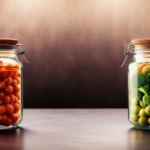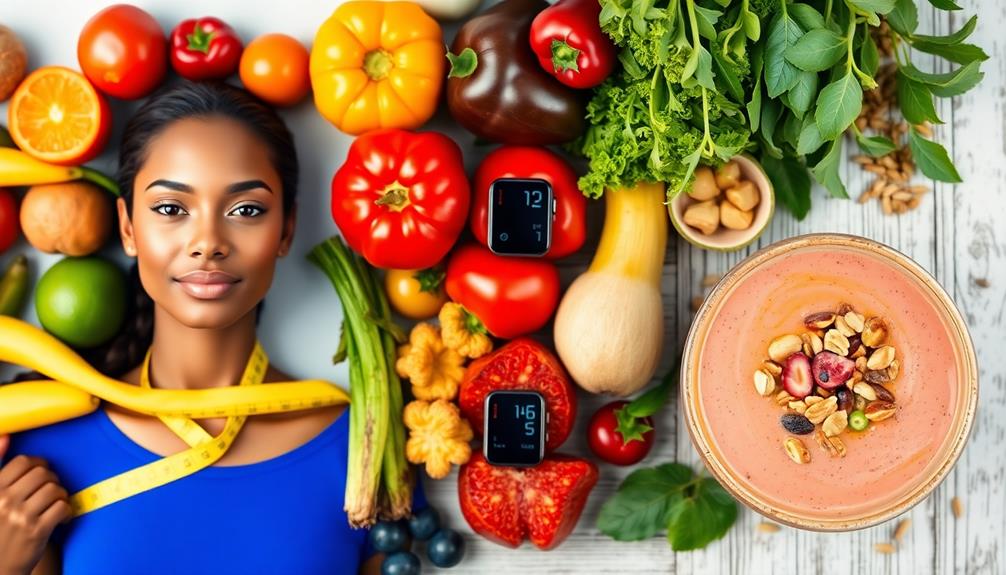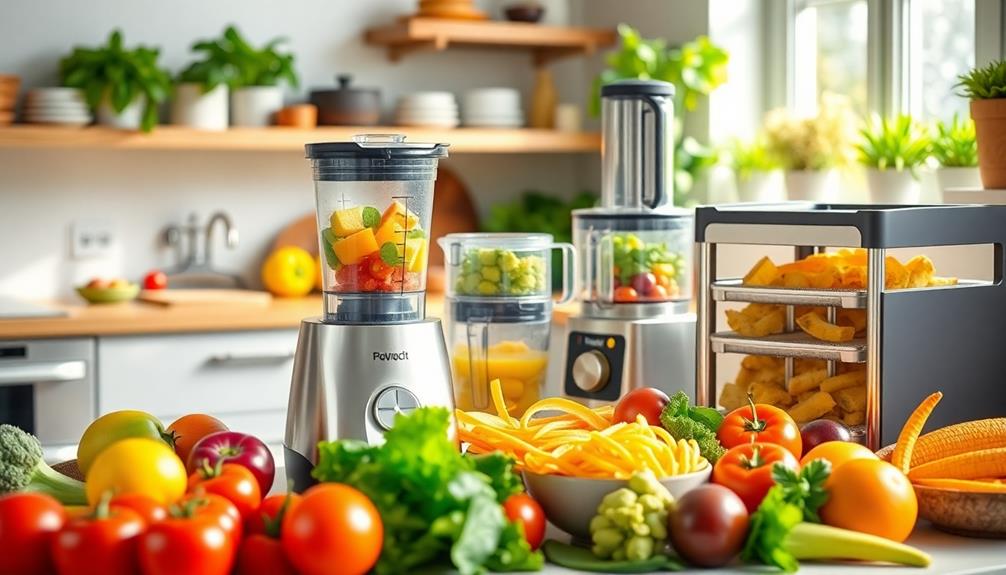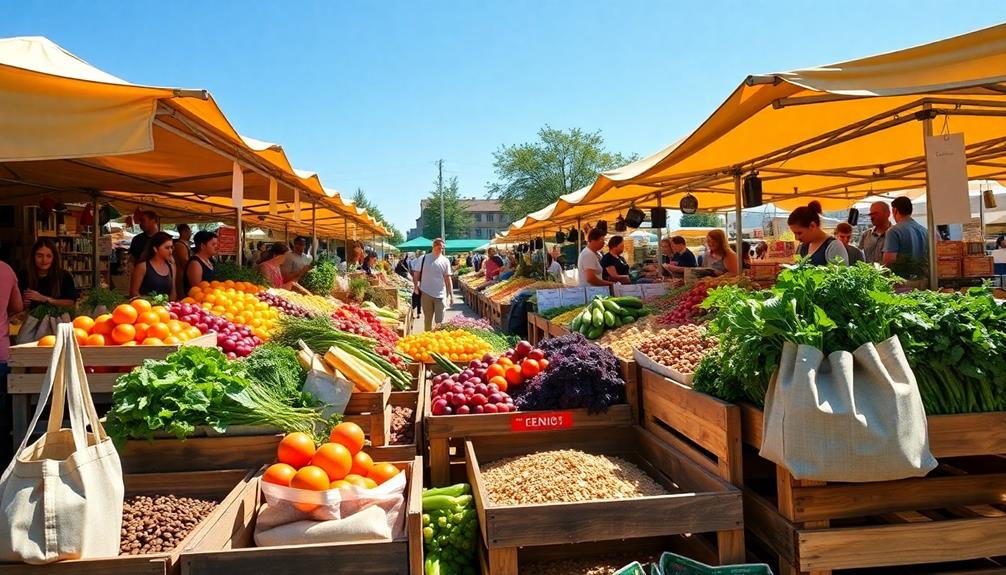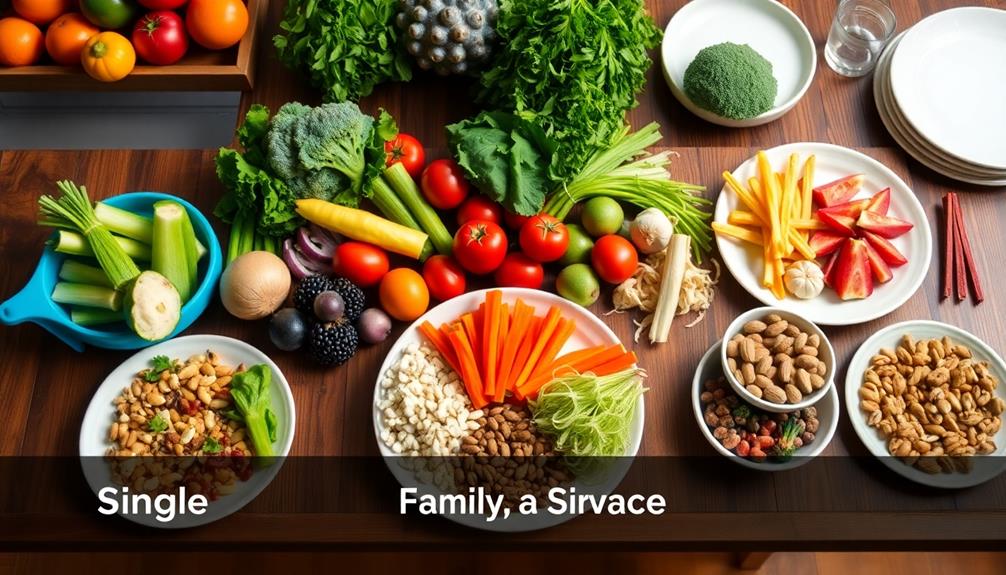I specialize in raw food nutrition and have spent years researching how these microorganisms affect our health.
Raw foods can be host to a variety of different kinds of bacteria, so it’s important that we understand how they interact with us in order to make informed decisions about what we eat.
In this article, I’ll explain the basics of raw food bacteria and discuss the potential implications for our health.
The types of bacterial communities present in raw foods vary significantly depending on their origin and environment; some are beneficial while others may cause harm.
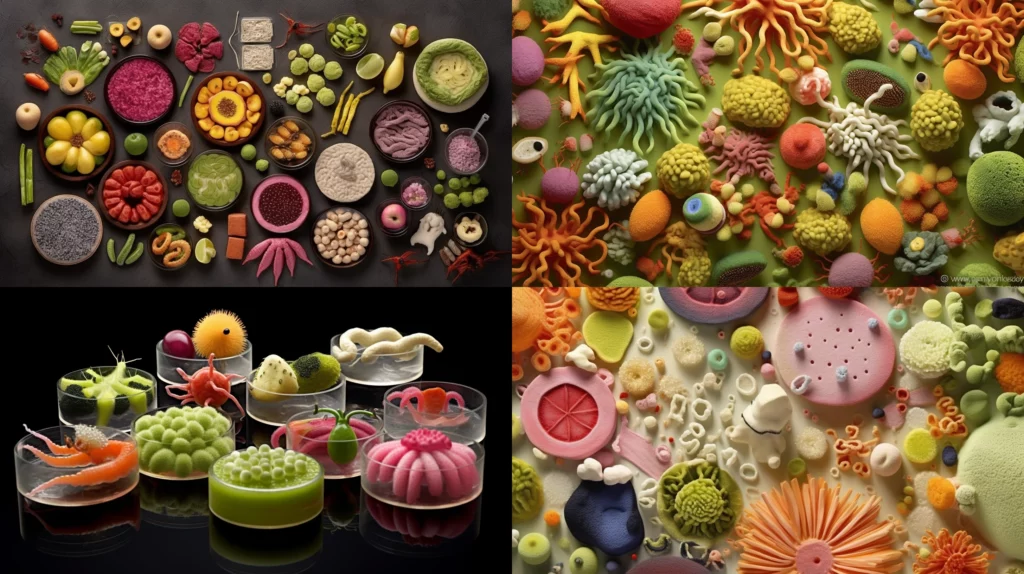
It is therefore essential that we gain an understanding of which bacteria are safe to consume and which should be avoided altogether. With this knowledge, we can ensure that our diets contain only those bacteria which will have positive impacts on our health.
The Different Types Of Bacteria Found In Raw Foods
When it comes to raw food, bacteria is a major concern. From proper storage and handling practices to the microbial diversity of an item, bacterial presence can have a huge impact on the safety and quality of foods. As a specialist in raw food bacteria, I’m here to provide you with all the information necessary to understand how this complex process works.
It’s important to note that there are many different types of bacteria found in raw foods due to their high microbial diversity. The most common strains include Salmonella, E. coli and Listeria, but there are also thousands of other species present in various combinations depending on factors such as environment and storage conditions. All these different microorganisms make up what’s known as the bacterial diversity of a product.
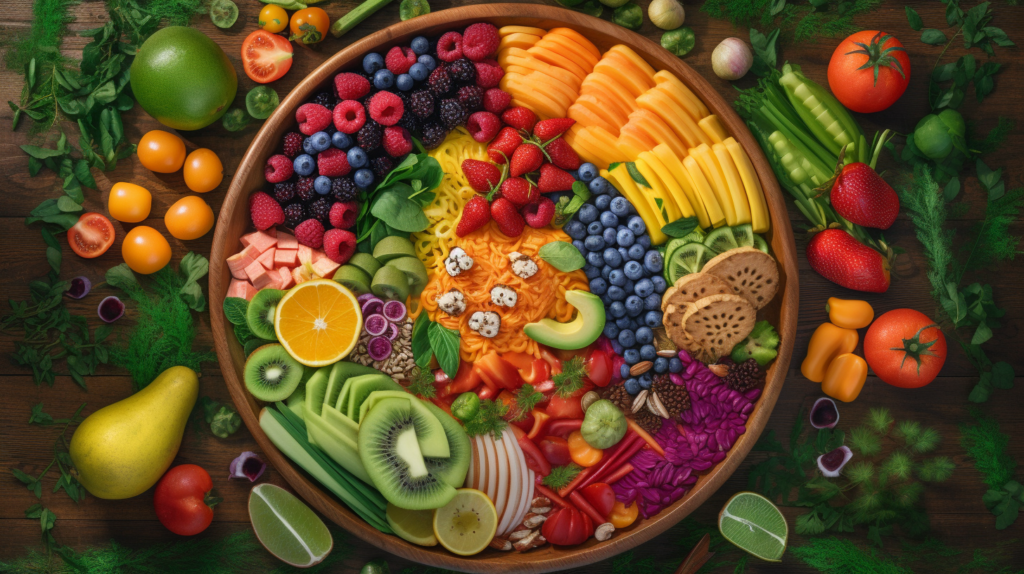
Understanding this complexity is key when assessing risk levels associated with consuming raw items. Therefore, it’s essential to take into account not only the type of bacteria present but also how environmental and storage conditions may affect its presence or absence.
To do so properly requires expertise and knowledge about all aspects involved in food safety management systems. With that being said, let’s move on now and explore further how environment and storage conditions affect bacterial presence…
How Environment And Storage Conditions Affect Bacterial Presence
As a raw food bacteria specialist, I understand that environment and storage conditions affect the presence of bacteria. Heat tolerance is key in maintaining bacterial populations, so it’s important to store foods at temperatures below 40 degrees Fahrenheit if you want to preserve them for longer periods of time. Similarly, processing effects play an integral role in how much bacteria remains on your food.
For example, freezing temperatures can reduce bacterial numbers by up to 90%. Canning or cooking can reduce bacterial counts by 70-90%. Applying high pressure treatments can decrease bacteria levels down to 1%.
It’s clear that understanding these environmental factors and applying them properly will have significant impacts on any bacteria present in your food sources. To ensure best results when handling raw food materials, make sure all safety protocols are followed accordingly – such as proper temperature controls and prevention against contamination.
With this knowledge, you’ll be able to enjoy meals with full confidence knowing you’re taking necessary steps towards eating safely. Coming up next, let’s discuss the benefits of consuming beneficial bacteria!
The Benefits Of Consuming Beneficial Bacteria
As the old saying goes, “you are what you eat,” and this couldn’t be more true when it comes to raw food bacteria. Raw foods have beneficial bacteria that can help improve our gut microbiome; however, its presence also depends on environment and storage conditions.
The following table summarizes some of the benefits of consuming beneficial bacteria in raw food:
| Benefits | Description |
|---|---|
| Improved Digestion | Beneficial bacteria helps break down nutrients from food for better absorption. |
| Reduced Food Spoilage | Beneficial bacteria produce lactic acid which inhibits pathogenic organisms growth. |
| Strengthened Immune System | Consuming probiotics provides additional protection against disease-causing germs. |
As a raw food bacteria specialist I recommend always being mindful of environmental factors like temperature and humidity as they will directly affect the presence of beneficial bacteria in your food. Not only could it lead to poor digestion or weakened immune system but if not stored properly, pathogenic microorganisms may start to grow creating a risk for serious health issues caused by consumption. With these things in mind we should proceed with caution when deciding whether or not to consume raw foods that contain beneficial bacterial cultures.
The Risks Of Consuming Pathogenic Bacteria
Consuming raw food carries a risk of exposure to potentially pathogenic bacteria. Microbial diversity in these foods can be hard to predict and the presence of harmful organisms is always a possibility.
To lower this risk, it’s important for those who eat raw food to practice proper sanitization techniques before consumption. This includes thoroughly washing all produce with soap or disinfectant, discarding any questionable items, and using separate cutting boards and utensils when preparing raw food.
It’s also essential to recognize that not all bacteria are bad; some are beneficial and even necessary for our health. For example, certain types of bacteria play an important role in digestion and nutrient absorption.
Therefore, while caution should be taken around consuming raw foods due to the potential presence of dangerous pathogens, we must also consider the positive aspects of microbial activity in our diets as well.
By being mindful about how we choose and prepare our meals – both cooked and uncooked – we can ensure that our diet is balanced for optimal health.
The Role Of Bacteria In Digestion And Nutrient Absorption
As a raw food bacteria specialist, I’m well-versed in the microbial ecology of how beneficial bacteria profoundly affect digestion and nutrient absorption. To understand how our bodies process foods containing live microorganisms, it’s important to consider several factors:
- Temperature control – The temperature at which raw food is stored has an effect on its taste as well as the number of viable bacteria present.
- Microbial Ecology – Different types of bacteria can influence the flavor profile of certain dishes while also providing nutrition benefits.
- Nutrient Absorption – Bacteria can help break down molecular bonds so that essential nutrients are more easily absorbed by your body.
It’s clear that understanding the interaction between raw food and beneficial bacteria is key for optimal digestion and nutrition. While scientists are still learning about the complexity of this relationship, it’s clear that these tiny organisms play a significant role in maintaining good health.
From here we will explore the antibiotic resistance of raw food bacteria and what implications this may have on human health.
The Antibiotic Resistance Of Raw Food Bacteria
Having discussed the role of bacteria in digestion and nutrient absorption, it is important to consider their ability to develop resistance against antibiotics. Bacterial adaptation has been studied for decades as a way to understand how pathogens become more resistant to treatments over time.
In particular, antibiotic exposure has resulted in an alarming rise in drug-resistant bacteria across the globe. The impact of raw food bacteria on antibiotic resistance should not be overlooked. The presence of pathogenic microorganisms can lead to contamination if proper hygiene practices are not followed when preparing and storing food items.
Therefore, understanding the mechanisms behind bacterial adaptation can help us create strategies that prevent further development of drug-resistant strains of germs. These strategies should include frequent testing of raw foods for microbial content so that any potential risks associated with improper handling or storage can be identified quickly and appropriate measures taken.
We must also ensure our medical professionals are aware of the seriousness of this issue so they can take steps towards preventing its spread through effective diagnoses and treatment plans. With these precautions in place, we may be able to protect ourselves from the dangerous consequences associated with antibiotic-resistant organisms found in raw foods.
The Impact Of Raw Food Bacteria On Food Safety
I’m a raw food bacteria specialist, and I’m here to discuss the effects of raw food bacteria on food safety.
There are some benefits of raw food bacteria, such as enhanced flavor, improved texture, and increased nutrient absorption. However, there are also some negative effects of raw food bacteria that need to be taken into account, such as the potential for food-borne illnesses and the increased risk of contamination.
It’s important to take a balanced approach when looking at the pros and cons of raw food bacteria.
The Benefits Of Raw Food Bacteria
Raw food bacteria can have a positive impact on the safety of our food. With an increased focus on raw diets and healthy eating, it has become more important than ever to understand how bacteria in raw foods affects us. As a specialist in this field, I’m here to explain the benefits that these microscopic organisms provide for our diet.
The first benefit is nutrition. Raw food contains beneficial microbes that help break down complex carbohydrates into simpler molecules which are easier for the body to absorb and use as fuel. This process helps increase nutrient absorption from foods such as fruits, vegetables, nuts, seeds and grains, leading to improved overall health. Additionally, these microorganisms also produce nutrients like vitamins B-12 and K2 that may not be present naturally in many plant-based foods.
Moreover, certain types of bacteria can act as natural preservatives by inhibiting spoilage or contamination by other harmful microbes – thereby helping maintain food hygiene standards without any artificial additives or chemicals.
In addition, some bacteria have been found to have antibacterial properties which help protect against pathogens like Salmonella or E. coli while also boosting immunity levels when consumed regularly through a balanced raw diet.
All in all, raw food bacteria offer numerous advantages when it comes to promoting good health and improving food safety both directly and indirectly.
The Negative Effects Of Raw Food Bacteria
While raw food bacteria can have some positive effects on our diet, there are also some potential negatives to consider.
Firstly, if consumed in high enough quantities, these bacteria can cause digestive distress and foodborne illnesses due to the presence of harmful pathogens like Salmonella or E. coli.
Secondly, cooking temperatures above a certain degree will kill beneficial microbes along with any potentially dangerous ones – meaning that we lose out on their health benefits as well as their ability to act as natural preservatives.
Finally, without proper preservation methods such as refrigeration or freezing, food spoilage caused by these microorganisms may occur more quickly than it would otherwise.
All things considered, it is important for us to be mindful about the potential risks posed by raw food bacteria when making dietary decisions.
The Role Of Raw Food Bacteria In Fermentation
Fermentation is a process that has been used for centuries to preserve food and enhance its flavor. As such, the role of raw food bacteria in fermentation cannot be overstated. With a few simple methods, one can control microbial balance and create unique flavors with just a bit of effort.
Here are four ways to ensure your fermented foods turn out as delicious as possible:
- Use vegetables with high water content so they ferment faster and more evenly;
- Choose starter cultures that have low acidity levels;
- Monitor temperatures during fermentation carefully; and
- Stir batches regularly, depending on the type of ferment being created.
By using these techniques, you can develop complex flavors not found in other types of food preservation or cooking methods. The combinations available when fermenting with raw food bacteria are endless – from sweet and savory pickled vegetables to tangy kimchi to sourdough breads.
Without question, mastering the art of fermentation will open up new culinary possibilities for any raw food enthusiast! Now we move onto how this process affects flavor and aroma.
The Effect Of Raw Food Bacteria On Flavor And Aroma
I’m a raw food bacteria specialist and I’m here to talk about the effect that raw food bacteria can have on flavor and aroma.
There are many different types of bacteria that can be found in raw food, and each of them can affect the flavor and aroma in different ways.
For example, some bacteria can add a sour flavor while others can add a sweet flavor.
Additionally, different bacteria can increase the intensity of the aroma of the food, making it more aromatic.
All of these different bacteria types can combine to create a unique flavor profile and aroma, making raw food a truly unique culinary experience.
Bacteria Types
Hey everyone, I’m here today to talk about the effect of raw food bacteria on flavor and aroma.
As a raw food bacteria specialist, it’s my job to know all the different types of microbes that can affect how our foods taste and smell.
One way to think about this is in terms of microbial diversity; there are many kinds of bacteria present in natural habitats like soil or water which can contribute to the overall flavor profile of raw produce.
For instance, some species are known for their earthy flavors while others may give off more fruity aromas.
Understanding these differences is essential if we want to get the most out of our meals! Ultimately, learning what kind of microorganisms make up an ingredient’s environment helps us appreciate its unique character even more.
Flavor Profiles
Now that we’ve discussed the microbial diversity of raw food bacteria and their effect on flavor and aroma, let’s move onto the subject of flavor profiles. Flavor profiles can be used to further understand the unique character of a certain ingredient or dish by looking at its chemical composition.
For instance, some components may have an earthy taste while others might be more sweet or sour. This knowledge is especially important for those who are interested in creating delicious dishes with fresh produce!
Probiotic supplementation also plays an important role in understanding what kind of flavors and aromas a particular ingredient brings to the table. Probiotics contain beneficial microorganisms which are known to enhance flavor profiles.
Adding probiotics into your diet has been linked to improved digestion as well as better overall health – something that I’m sure all of us strive for!
By taking these factors into account when cooking with raw foods, you’ll be able to create flavorful meals that everyone will love! With this knowledge, you’ll be able to experiment and explore different tastes without sacrificing nutrition or quality ingredients.
Aroma Intensity
Now that we’ve gone over the flavor profiles of raw food bacteria, let’s move onto discussing their impact on aroma intensity.
Aroma plays an important role in enhancing the overall taste and perception of a dish – it can make or break its appeal.
Bacterial diversity is key when considering the aromatic properties of raw foods as different strains of bacteria produce different levels of volatile compounds.
Cooking methods also play a large part in affecting how much aroma is released from ingredients. For example, roasting vegetables might bring out more intense aromas than boiling them would.
By taking into account both bacterial diversity and cooking techniques, you’ll be able to create dishes with just the right amount of aroma intensity!
The Benefits Of Prebiotics In Raw Food
Having discussed the effect of raw food bacteria on flavor and aroma, let’s now look at the benefits of prebiotics in raw foods. Prebiotics are a type of dietary fiber that feed beneficial microorganisms living in our guts – microbes that play an essential role in human health.
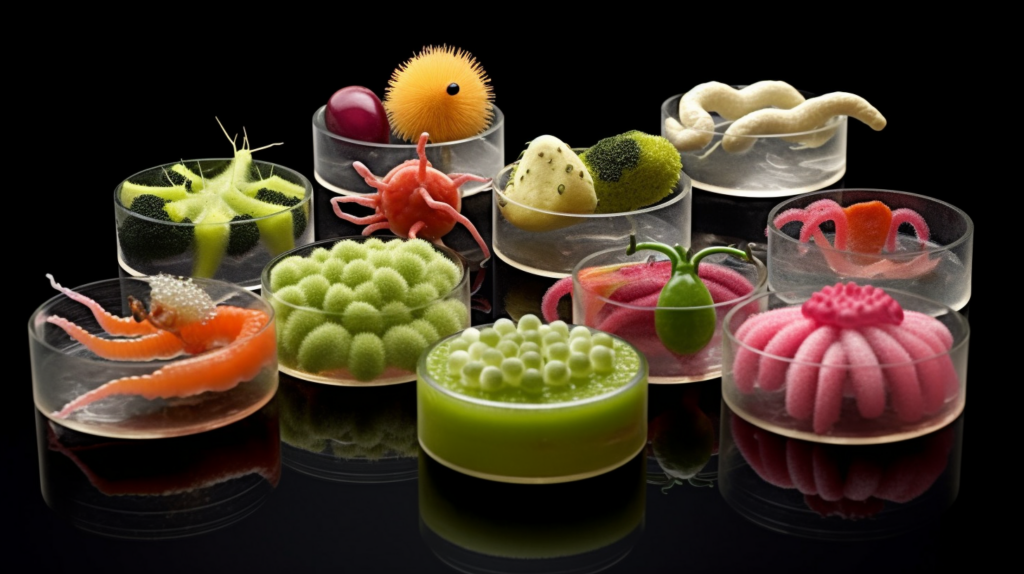
Prebiotic fibers have been found to increase microbial diversity and bacterial abundance within our gastrointestinal tract. This means that more friendly bacteria will be present which enhance digestion and nutrient absorption as well as protect us from pathogens. Additionally, these beneficial gut microbiota also produce vitamins such as B12 and butyrate, which can reduce inflammation caused by diseases like Crohn’s or IBS.
| Microbial Diversity | Bacterial Abundance | Health Benefits |
|---|---|---|
| Increased | Increased | Enhanced Digestion & Nutrient Absorption |
| Protection From Pathogens | Reduced Inflammation Caused By Diseases | |
| Production Of Vitamins |
The table above highlights how prebiotics support our digestive systems through increased microbial diversity and bacterial abundance. As we move into further discussion about the role of bacteria in human health, it is important to recognize the positive impact of incorporating prebiotic rich foods into one’s diet for better overall wellbeing.
The Role Of Bacteria In Human Health
Raw food bacteria can be incredibly beneficial for human health, but it is important to understand the role of these microbes and their impact on our bodies.
When raw food undergoes fermentation, a process where microorganisms convert carbohydrates into alcohol or acids, probiotics are formed which have been proven to produce some amazing effects. But why do these little things matter?
Here’s what we know:
- Raw fermentation has an incredible effect on our digestive systems.
- Studies show that the probiotic effects of fermented foods promote healthy gut flora while creating stronger immune responses in humans.
- Additionally, these microbes help maintain a balanced diet by introducing enzymes and vitamins vital to optimal nutrition.
- Lastly, they act as natural preservatives since the acids produced during fermentation inhibit spoilage from other organisms.
The potential benefits associated with raw food bacteria make them invaluable components of any diet – however, there are still risks involved if proper control measures aren’t taken when handling and consuming them. With this in mind, it is essential to develop strategies for identifying and controlling raw food bacteria before adding them to your lifestyle.
Strategies For Identifying And Controlling Raw Food Bacteria
The identification and control of raw food bacteria is a major concern for any health-conscious consumer. Rapid testing and monitoring can help us identify the microbial diversity present in our foods, allowing us to make informed decisions about what we eat. To gain an understanding of how best to manage this process, let’s look at the following table:
| Method | Benefits | Drawbacks |
|---|---|---|
| PCR Testing | Fast results | Expensive |
| Culture Tests | Accurate | Time consuming |
| Elisa tests | Cost effective | False positives |
PCR testing offers fast turnaround on test results but it is relatively expensive. Culture tests are accurate but require a lengthy wait time before obtaining results. Elisa tests offer cost effectiveness however they tend to produce false positives which could lead to incorrect analysis. Depending on your needs, each method has its own set of advantages and disadvantages that need to be weighed up when considering the most suitable approach.
Having discussed the various methods available for identifying and controlling raw food bacteria, it’s now time to turn our attention towards exploring the role probiotics play in this area.
The Role Of Probiotics In Raw Food
I’m a raw food bacteria specialist, and I’m here to talk about the role of probiotics in raw food.
Probiotics provide the body with many health benefits when consumed in raw food, such as improved digestion and immunity.
Bacteria can have an impact on the quality of raw food, but with the right probiotic strain, the food can be preserved for a longer shelf life.
Additionally, probiotics can also help reduce food-borne illnesses that can occur in raw food.
In conclusion, probiotics are an important part of maintaining the health benefits of raw food.
Health Benefits Of Probiotics In Raw Food
As a raw food bacteria specialist, I can vouch for the incredible health benefits of probiotics in raw food. They foster microbiome diversity and provide environmental sources to improve our overall wellness.
Probiotics are live microorganisms that help us maintain healthy digestive systems by increasing the good bacteria in our guts and helping break down foods we eat. Additionally, they also strengthen our immune system, reduce inflammation, improve mental clarity and lower cholesterol levels.
The most common type of probiotic found in raw foods is lactobacillus acidophilus which helps people with irritable bowel syndrome or other digestive issues. Other beneficial strains include bifidobacterium longum, saccharomyces boulardii and streptococcus thermophiles which all have powerful anti-inflammatory effects on the body.
Furthermore, these probiotics increase nutrient absorption from the food we consume so that our bodies get maximum nutrition out of every bite!
In conclusion, incorporating probiotics into your diet through consuming raw foods is an easy way to ensure you’re getting enough beneficial bacteria to keep your gut happy and healthy. Not only do they promote better digestion but they also offer many additional health advantages such as improved immunity and lowered inflammation levels – no wonder why it’s become more popular among health conscious individuals!
Impact Of Bacteria On Raw Food Quality
As a raw food bacteria specialist, I have seen firsthand the impact that different types of bacteria can have on the quality and nutritional value of raw foods. Through genetic manipulation and various processing techniques, we are able to cultivate specific strains of beneficial bacteria in order to give our bodies better access to essential nutrients and vitamins. This not only helps ensure that our meals are nutrient-dense but also provides us with an added layer of protection against illness since these probiotics help strengthen our immune system too!
Furthermore, when it comes to preserving freshness or extending shelf life, bacterial cultures play an important role as they act as natural preservatives which inhibit microbial growth and stop spoilage from occurring.
Most importantly though, having more diversity in our gut microbiome is always beneficial for overall health – so consuming probiotic-rich raw foods is definitely something worth considering if you want to boost your wellbeing!
In short, adding probiotics into your diet through eating more raw foods ensures not only maximum nutrition absorption in each bite but also optimal digestive health – plus who doesn’t love feeling healthier?
Preservation Of Raw Food With Probiotics
Probiotics are an amazing tool in the preservation of raw food. By adding probiotic supplements to your diet, you can help increase bacterial diversity and protect against spoilage from occurring.
This means that when it comes to preserving freshness or extending shelf life, having more probiotics present is extremely beneficial for ensuring maximum nutrition absorption with each bite. Plus, without needing to worry about potential illness due to a weakened immune system, consuming probiotic-rich raw foods becomes even more appealing!
It’s important to note however that not all bacteria strains found in probiotic supplements are beneficial – some may actually be harmful if consumed in large amounts. Therefore, it’s always wise to speak with your doctor before introducing any new dietary supplement into your routine.
That being said though, incorporating beneficial bacteria into our diets through eating more raw foods can have an incredibly positive effect on overall health – so why not give it a try?
In conclusion, adding probiotics into your daily meals ensures both optimal digestive health and maximum nutrition absorption. With such great benefits at hand there’s no reason why everyone shouldn’t incorporate this powerful tool into their lives and start reaping its rewards today!
Food Safety Regulations Related To Raw Food Bacteria
Having discussed the role of probiotics in raw foods, it is now important to consider food safety regulations related to raw food bacteria.
Raw food specialists must be aware of the various techniques used to manage bacterial growth, including sauerkrautology and pasteurization techniques. Sauerkrautology involves fermenting vegetables such as cabbage with lactic acid bacteria, which can help reduce spoilage caused by other types of bacteria while also providing beneficial health effects. Pasteurization uses heat or radiation to kill off harmful microorganisms that may contaminate raw foods.
Food safety regulations vary from country to country but generally involve controlling the presence of certain pathogenic organisms in order for a product to be considered safe for human consumption. In the United States, for example, the FDA has established standards for acceptable levels of Escherichia coli (E. coli) and Salmonella species in fresh produce and processed meats. Additionally, these products must meet specific requirements regarding their packaging and labeling in order to ensure consumer protection.
These regulations provide an essential framework for ensuring that consumers are not exposed to potentially dangerous contaminants when consuming raw foods. However, further research into potential future advances in raw food bacteria management is necessary in order to continue protecting public health at home and abroad.
With this knowledge, we will be better equipped to develop new strategies and technologies that can help keep our families safe from harmful pathogens found in unpasteurized products.
Potential Future Advances In Raw Food Bacteria Research
It is often assumed that advances in raw food bacteria research are not possible due to its unpredictable nature. However, with the help of modern technology and the development of new techniques, progress can be made in this field.
Genome sequencing has been used to gain insight into the genetic makeup of different kinds of raw food bacteria. By studying the DNA sequences within these organisms, researchers have identified genes involved in their growth and survival under certain conditions.
In addition, DNA analysis has also revealed potential drug targets for treating diseases caused by raw food bacterial infections. These methods offer exciting opportunities for further exploration into understanding how raw food bacteria interact with each other and their environment.
Additionally, they provide a platform for discovering novel treatments or vaccines against various illnesses associated with these microorganisms. Ultimately, continued investment in genome sequencing and DNA analysis will enable us to make significant strides towards better managing outbreaks from raw food bacterial contamination.
Frequently Asked Questions
What Are The Most Common Types Of Raw Food Bacteria?
When it comes to the most common types of raw food bacteria, there are actually quite a few.
These range from lactic acid-producing organisms such as lactobacillus and leuconostocs, which can be found in fermenting techniques like sauerkraut or kimchi, to acetic acid producers like Acetobacter species, often used in vinegar production.
Other bacterial groups include Gram-positive cocci that produce bacteriocins and enterococci, which contribute to the diversity of microbial communities present in raw foods.
How Can I Reduce The Risk Of Consuming Pathogenic Bacteria?
If you thought raw food bacteria was a thing of the past, think again! With dietary habits changing and sanitation standards lessening, it’s more important than ever to reduce your risk of consuming pathogenic bacteria.
So how can you do that? Well, as an expert in all things related to raw food bacteria, I suggest starting with being mindful about what you put into your body. Make sure that whatever you decide to eat is fresh and free from contamination; pay attention to expiration dates and package seals too.
Additionally, be aware of any areas where cross-contamination can occur – like between cooked and uncooked foods – so you don’t end up unwittingly ingesting something dangerous. Taking these precautions will help ensure that your risk of contracting a disease or infection from raw food bacteria stays at bay.
Are There Any Known Side Effects Of Consuming Prebiotics In Raw Food?
When it comes to dietary sources, prebiotics are an important component of overall food safety. However, there is some debate about the potential side effects of consuming these beneficial bacteria in raw foods.
Generally speaking, while they may cause mild digestive issues such as gas and bloating in some people, no major long-term health risks have been identified.
It’s worth noting that expert opinion varies on this subject – so if you’re concerned or experiencing any adverse symptoms, it’s best to consult with your doctor before making changes to your diet.
What Are The Best Practices For Identifying And Controlling Raw Food Bacteria?
Are you concerned about the raw food bacteria lurking in your kitchen? Don’t worry, with a few best practices and storing guidelines you can identify and control these pesky microbes.
To start off, make sure to keep all of your raw ingredients at or below 40°F when storing them; any higher temperature could lead to an increase in bacterial growth.
Additionally, never forget that cooking temperatures should reach 165°F minimum as this will help kill off any harmful bacteria on contact.
With these easy tips in mind, you can stay safe from those nasty germs!
Are There Any Regulations Governing The Consumption Of Raw Food Bacteria?
It’s true, there are regulations surrounding the consumption of raw food bacteria.
Generally speaking, these regulations focus on storing temperatures and proper food handling techniques.
If a person is preparing or consuming raw foods with potential bacterial contamination, they must adhere to specific guidelines set by government agencies.
These guidelines can differ from country to country, so it’s important to check local laws before partaking in any type of activity involving raw food bacteria.
It all boils down to making sure you’re properly informed about both the risks and rewards associated with eating certain types of raw food bacteria.
Conclusion
It is important to understand the risks posed by raw food bacteria, as well as the potential benefits.
With proper knowledge and caution, we can make sure that our consumption of these microorganisms is both safe and beneficial.
By understanding which types of bacteria are present in raw foods, how to reduce risk, and best practices for controlling them, we can be confident that our dietary choices are supporting us on our journey towards optimal health.
Let’s all work together to create a culture of conscious consumption when it comes to raw food bacteria – let’s choose wisely and nourish ourselves with care!

